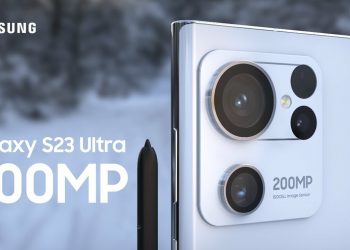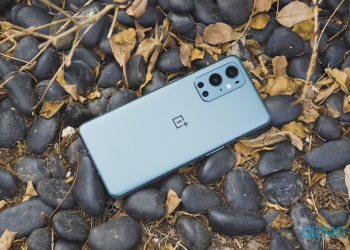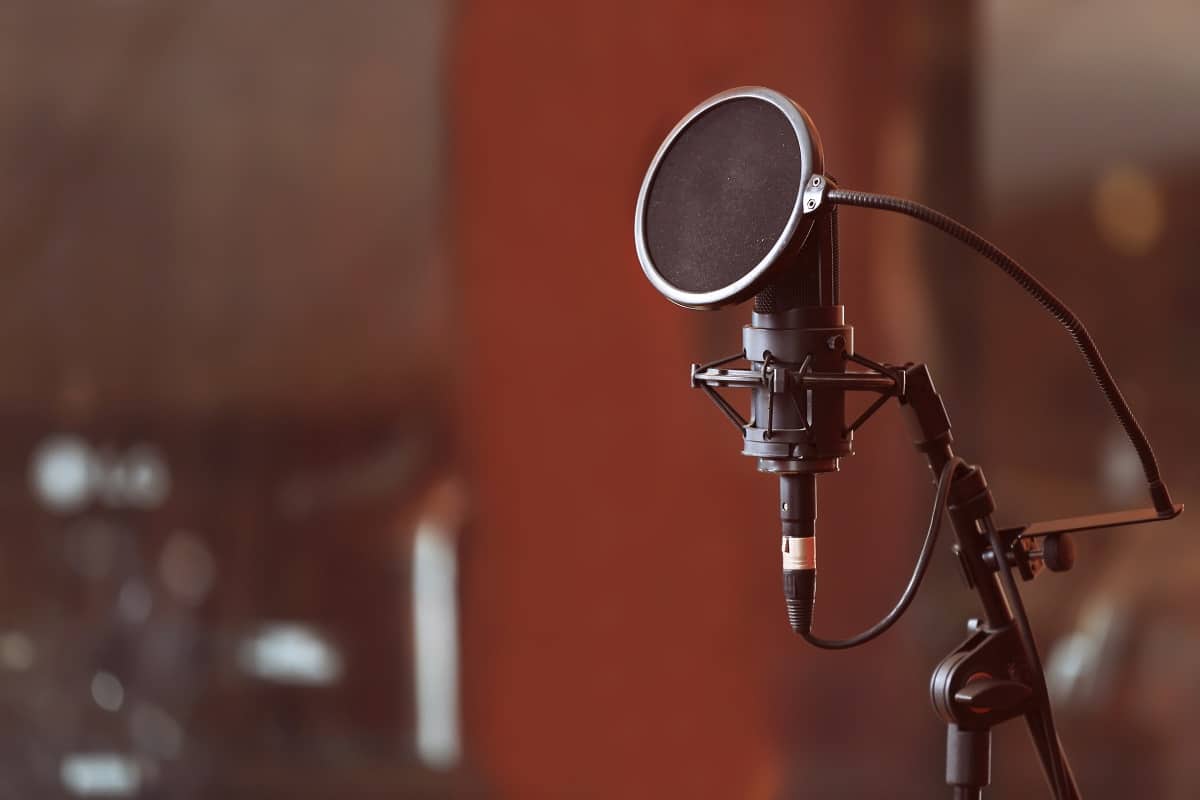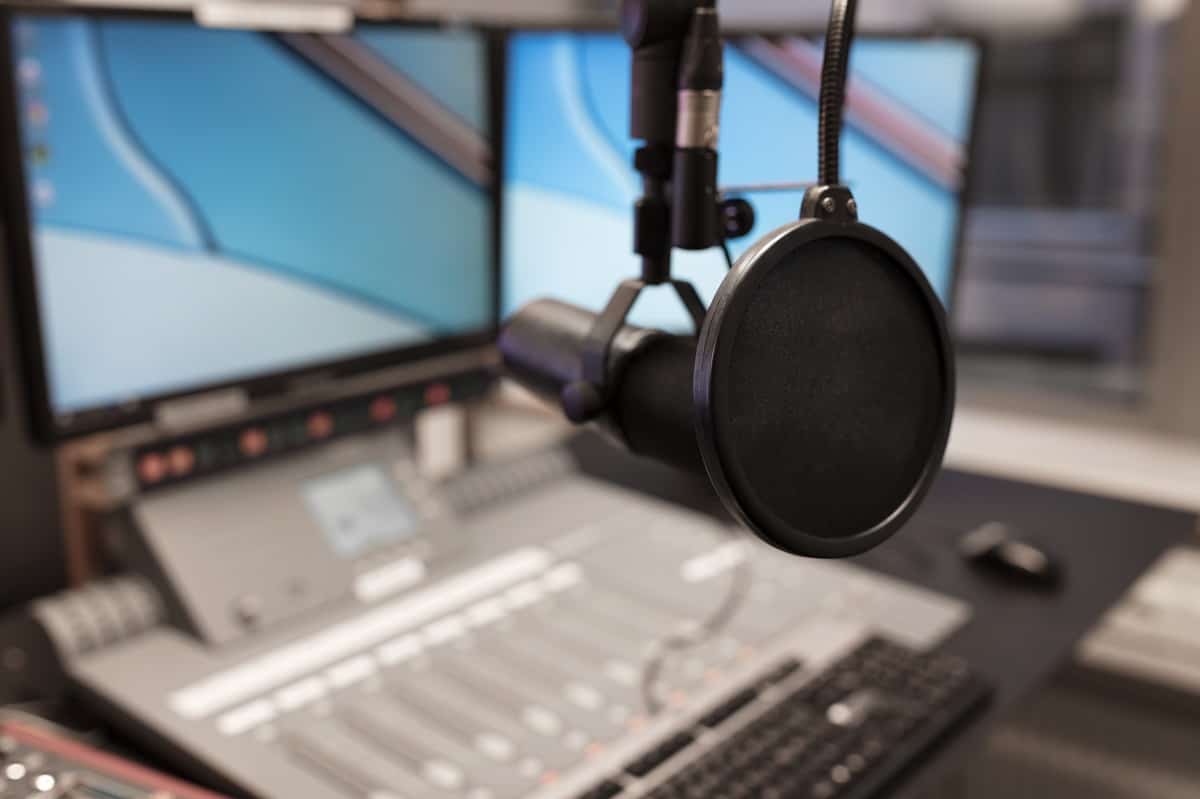Updated on April 4th, 2022
Whatever trade you are in, using the right tool for the job is a vital part of getting the result that you want from your work. This is no different in the world of music, and having the right microphone can make the difference between a track that captures all the depth of your voice and instruments, and a distorted, screaming mess.They’re not perfect for every audio recording, or for every situation, but condenser microphone were an innovative advance in microphone design that has stood the test of time.
The design of condenser microphone has developed significantly over their century of use so far, and for much of that time, they have been standard equipment for many recording studios.
What is a Condenser Microphone?
A Condensed History of the Condenser Mic
Condenser microphones have been around for over 100 years, with the first being invented in 1916 by physicist and engineer E.C. Wente for Western Electric. They were originally created to make transcontinental telephone calls possible, as they produce a much stronger signal when connected to an amplifier than their carbon microphone predecessors.
These older designs used the motion introduced into loose carbon granules by sound to modulate an electric current, and in so doing resulted in a background hiss that wasn’t present in the newer condenser microphones. They also required a stronger audio signal to start off with, while condenser mics could pick up much softer, and also higher-pitched, sounds.
The original condenser mics used vacuum tubes and two relatively thick steel plates, which were eventually replaced by transistors and thinner aluminum respectively as technology advanced. The invention of phantom-powered microphones in the mid-1960s got rid of the need for individual power supplies for each unit, making them much more convenient to use. They have since become one of the most popular choices of equipment in both studio and laboratory recordings.
How Do They Work?
Condenser microphones are also known as capacitor microphones, as they operate by using the capacitance between two plates to create an electric signal from sound waves. The rear plate is fixed in place, while the front plate, in the form of a diaphragm, moves with audio signals. This changing distance between the two plates creates variations in the electric current, and so the sound waves are transduced into an electrical signal that can be transferred to an audio system or to recording equipment.
Compared to dynamic microphones, which use a relatively heavy coil as their moving part, the thinness of the (usually) gold-sputtered mylar diaphragm allows for more sensitivity to the audio received. This means that condenser microphones are able to pick up a much more nuanced sound than other types of mics.
What Are They Used For?
The delicacy of the sounds that a condenser mic is able to pick up means that they are the prime choice when recording quieter sounds, as well as providing for a much wider range of frequencies. They also have a better transient response and are much more sensitive than other sorts of microphones, while they produce less noise.
This is why they lend themselves to audio recordings that have wider dynamic ranges rather than high volumes. They are great for use in recording studios, as they are able to pick up subtleties that dynamic microphones just wouldn’t register. They are ideal for singers with more variable tones to their voices, as well as for recording the full warmth and depth of sound produced by acoustic instruments.
They’re not just great for recording music, though. They also see a lot of use in vocal recordings, such as for radio shows, audiobooks, voiceovers, and podcasts. They’re used in the film and TV industry for making sound effects, ambient tracks, and are almost exclusively the sort of microphone contained in boom mikes used for recording vocals.
What are the Downsides?
No tool is perfect for every job. For example, Michael Jackson’s album ‘Thriller’ was recorded using a dynamic mic, as his powerful voice could overwhelm the more sensitive machinery in a condenser mic. Condenser mics are also much more sensitive to moisture, have a lower tolerance for louder volumes, and are more likely to result in feedback.
This, combined with their relative fragility in comparison to the much more robust dynamic mics, is why in most situations, a dynamic mic is the weapon of choice for live performances… especially for the more raucous musicians.
Conclusion
Condenser microphones are great for delivering a nuanced, delicate sound, ideal for fully capturing the true range of vocal and instrumental performances. They’re not so perfect for louder environments and are relatively fragile, and the high-quality models are comparatively expensive compared to other types of microphones. You get what you pay for with a condenser mic, as going for the cheaper electret types can often result in a poorer quality of sound than a dynamic mic of the same cost.
Now that you have a more in-depth understanding of the uses of condenser mics, hopefully, you can make an informed decision about whether these sensitive little marvels of sound engineering are the right choice for your recording needs.
See related topic:
Best Large Diaphragm Condenser Microphone of 2021
Best Air Purifier in the U.S. for Better Respiratory Health 2021 Acekool Air Purifier
We hope you love our reviews! For your information, we do earn money from commission in the link in the content! For more information click here!














